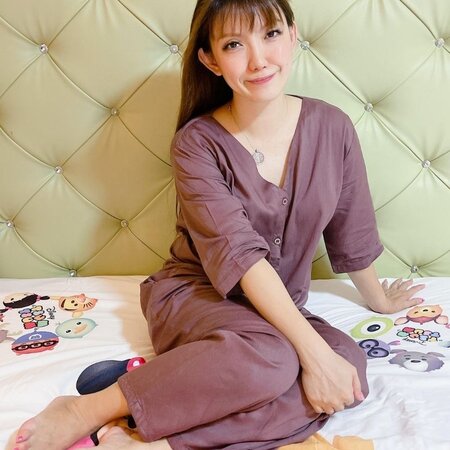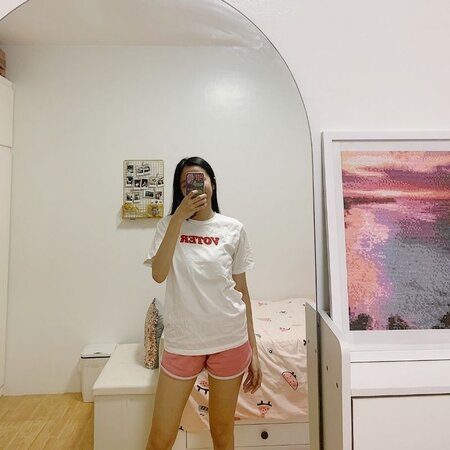Sleepwear is its own category when it comes to fashion but, to some extent, it is a bit underrated. Some of us may have thought that having separate outfits at home for day and night — especially pre-pandemic — is quite a luxury. But now that the lines between work and rest have become blurry because of the work-from-home setup many of us are in, a projected rise in sales for sleepwear (and loungewear) in the years to come has been predicted. Why are more people investing in sleepwear and does wearing it actually have wellness benefits waiting to be discovered?
Looking into the history of sleepwear
Before we try to explore the wellness benefits of sleepwear, let’s get a little bit geeky first. The first recorded history of pyjamas was the “direct result of British presence in India” during the 18th and 19th centuries. It was a type of garment that was worn by both nobles and peasants, even transcending gendered attire at the time. Even so, it became more popular with men as a form of loungewear.

(Photo from: Ketut Subiyanto via Pexels)
Fast forward to the 20th century, pyjamas evolved into a fashion piece associated with feminism. Coco Chanel was one of the more well-known figures who wore pyjamas in public, making it somewhat a symbol for women’s liberation and carefree style. Eventually, this led to women from all walks of life finding the appeal of dedicated articles of clothing for sleep or lounging.
What our Clozetters are wearing
We asked some of our Clozetters about their choice of snooze outfits. For content creator Chi, oversized clothes are her preferred sleepwear outfit as they allow her to move a lot more freely in bed. Team Clozette’s Content Solutions Manager Abby shares Chi’s preference since an “oversized shirt plus lounge shorts” is her go-to sleepwear combo. Content creator Erica, meanwhile, loves loose-fitting pyjamas as they help her feel “more relaxed to get into the mood to sleep”.

Erica in her pyjamas
Chi and Erica both agree that having different sets of clothes for day and night really helps in letting your body know when it has to be active and when it has to rest. They also both think that people go through the trouble of changing into a sleepwear attire because of this reason and simply because most sleepwear pieces are designed to actually create better sleep.
As for Abby, sticking to her day clothes for sleepwear is a lot more convenient especially since she doesn’t leave the house much these days. Still, she’s very meticulous when it comes to her clothes’ material, making sure that each piece is “100% cotton, not silk, spandex cotton or polyester” considering the hot weather in the Philippines.

Abby in her choice of sleepwear
Why it matters what clothes you sleep in
Now comes the question: What are the actual benefits of sleepwear when it comes to wellness? There are actually several reasons.
One, similar to what Chi and Erica stated, changing to another set of clothing before hitting the hay conditions the mind to think that it should be getting ready to shut off and retire for the day. And whether you’re conscious about it or not, this kind of regimen also helps create a better mood in general. Less feelings of anxiety before bedtime, better sleep.
Movement is also very important when it comes to sleeping. That’s why wearing less constricting clothes while you take your much-needed shut eye also plays a huge role in making sure you’re not disturbed by any form of chafing or scratching in the process. Pyjamas are designed specifically to ensure that this is addressed.
While the results of good sleep (a.k.a. better skin, natural toxins cleansing, etc.) don’t exactly have any direct correlation with your choice of sleepwear, it’s safe to say that a better sleeping experience equates to improved holistic health. Changing into sleepwear is very similar to doing your makeup in a way that it helps your psyche, which may then affect your physical health.
Working from home in your pyjamas? You might want to reconsider
Since the effects of sleepwear are more related to our mental health, it is worth noting that wearing one while you work from home can result in cognitive decline. Interestingly enough though, it’s not an issue of pyjamas affecting one’s productivity but rather the idea that there’s no proper separation between work and rest. So while it’s comfy to start hustling in your PJs, we still recommend you dress up for work as much as you can.
The uncertainty of whether or not we can go back to how things were can be jarring. After all, who would’ve thought in 2019 that our routines would change this significantly? That’s why finding joy and comfort in even the smallest things to at least ease our worries should be considered. A pair of pyjamas doesn’t carry all the answers, but hey, it’s a start.
Comments, questions or feedback? Email us at [email protected].








